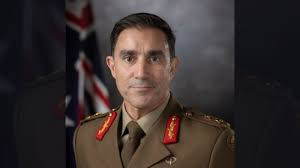Trump blames AT&T for tech issues in a call with faith leaders

Former U.S. President Donald Trump criticized telecom giant AT&T after a technical glitch disrupted a live call with thousands of faith leaders. The incident, which took place on June 30, 2025, caused a 20-minute delay and led Trump to publicly demand accountability from AT&T.
The virtual call was part of Trump’s outreach strategy to connect with religious leaders ahead of the 2024 election. However, the disruption quickly became a headline, sparking debate over telecom reliability, digital campaigning, and corporate responsibility.
What Happened?
Trump was scheduled to speak to over 8,000 pastors and religious leaders via a nationwide conference call. The call was expected to highlight his administration’s record and rally support among key faith groups.
Instead, participants experienced connection failures, dropped audio, and long pauses. The technical problem delayed the event by nearly 20 minutes.
When the call finally resumed, Trump was clearly frustrated. He said, “This is the second time this has happened. The boss of AT&T needs to get involved.” He also warned that the campaign might consider switching service providers.
AT&T Responds: It’s Not Us
AT&T quickly responded to the criticism. On social media platform X (formerly Twitter), the company stated that its network was not at fault.
Instead, the problem likely came from the third-party conference call platform used to host the event. AT&T added that it was in contact with the White House to understand what went wrong.
A spokesperson confirmed that AT&T is reviewing the matter but found no signs of internal issues. This shifts the focus away from AT&T’s service and toward the event’s hosting platform.
Why It Matters Politically
This wasn’t just a minor tech hiccup. Trump’s call with faith leaders is part of a larger campaign push targeting religious communities. Evangelical Christians and other faith groups played a crucial role in his past victories.
A delayed call creates more than just frustration—it risks undermining trust. Trump wanted to showcase strength and reliability. Instead, the event became a moment of awkward silence and technical confusion.
By blaming AT&T, Trump turned a digital failure into a rallying point. He cast himself as a victim of poor service and a fighter against inefficiency. That’s a message his base understands and supports.
Impact on AT&T and Public Reaction
Trump’s comments briefly affected AT&T’s stock, though it recovered quickly. Still, the public nature of the blame raised concerns for the telecom company.
Industry analysts suggest the issue was likely a server overload or setup failure on the event host’s side. With so many participants, even a small misstep could have caused a breakdown.
This isn’t Trump’s first fight with tech companies. He has often criticized social media platforms and large corporations. By publicly targeting AT&T, he reinforced his image as a leader who confronts powerful entities.
Faith Leaders Left Frustrated
The incident disappointed many religious leaders. They expected a smooth, professional experience. Instead, the delay disrupted schedules and left participants uncertain about what was happening.
Faith leaders are key influencers in their communities. When they attend political events, they expect clear messaging and respect for their time.
Some leaders have since called for better digital planning. They want test runs before future events and more reliable hosting platforms.
The Stakes Are High
Trump’s strategy includes regular outreach to faith-based groups. These communities align with his positions on social issues like abortion, religious freedom, and conservative judicial appointments.
This call was meant to energize these supporters. Despite the glitch, Trump’s 15-minute speech focused on past accomplishments and future goals. He emphasized his defense of traditional values and promised to protect religious liberty.
However, tech failures like this can harm momentum. If supporters view the campaign as disorganized, they may hesitate to commit fully.
Looking Ahead
Trump’s team is now reassessing its digital strategy. Reports suggest future events may use different platforms or include smaller audiences to avoid overload.
AT&T, meanwhile, continues to investigate the issue. The company maintains that its network functioned properly throughout the event.
For now, the blame game may fade—but the lesson remains. In digital campaigning, smooth tech execution is just as critical as the message itself.
Final Thoughts
Trump’s clash with AT&T highlights the high stakes of virtual campaigning. Even a single disruption can trigger public backlash, investor concern, and media scrutiny.
By turning the glitch into a talking point, Trump redirected attention and reinforced his image as a strong, vocal leader. Still, for future events, his team will need to ensure better planning and reliable tech infrastructure.
As the 2024 campaign heats up, every virtual appearance counts. And in this case, a broken call line echoed much louder than expected.






